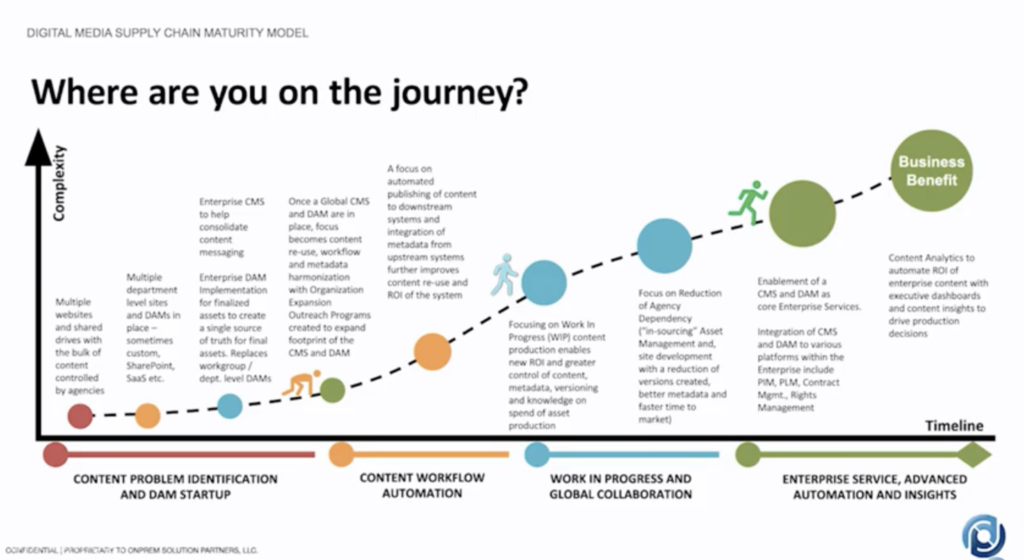Connections

OnPrem: How to Keep DAM Momentum in Today’s Environment
Story Highlights
With the pandemic forcing those in media and entertainment into a remote work environment seemingly overnight, tech and consultancy firm OnPrem Solution Partners decided to tackle a crucial question: what makes for a successful digital asset management (DAM) solution, and, in turn, a healthy digital media supply chain?
Four of OnPrem’s top executives tackled just that in a new video interview, “How to Keep DAM Momentum in Today’s Environment,” which helps M&E players understand what’s needed to keep their digital supply chain up to speed in today’s environment … and why a “mature” DAM is essential.
 “In light of recent world events, we’re seeing unprecedented change in how business are operating,” OnPrem partner Jon Christian says in the video. “We’re being forced to work from home, companies are completely shutting down. We thought this would be a good opportunity to basically look at our definition of a mature digital media supply chain, and see how that’s impacting companies in this particular environment.”
“In light of recent world events, we’re seeing unprecedented change in how business are operating,” OnPrem partner Jon Christian says in the video. “We’re being forced to work from home, companies are completely shutting down. We thought this would be a good opportunity to basically look at our definition of a mature digital media supply chain, and see how that’s impacting companies in this particular environment.”
The digital media supply chain — from initial content creation all the way to end-user consumption — looks to DAM as its central repository, allowing for integration upstream to enterprise systems, and downstream to web sites and streaming portals
For OnPrem principal Dave Liu, the ability to shift provide end-viewer personalization, even with a work-from-home environment, is proving especially crucial now, with more people streaming while on stay-at-home orders. “A mature DAM can especially help with that,” he said. “In regards to remote access, a mature DAM is one based on a scalable cloud architecture that has robust access security policies in place.
“When dealing with limited bandwidth, as we are today, DAM’s with file-acceleration tools can be helpful as well.”
 OnPrem principal Tim Day said he’s seen some companies operate just fine during the pandemic, but others have uncovered major inefficiencies during the crisis, almost to the point of being unable to properly do business. “A lot of times they have siloed systems, hard drives of content, and even sometimes agencies controlling their content for them,” he said. “This creates a lot of manual processes, oftentimes reliant on paper and email, which is a really unstructured workflow.
OnPrem principal Tim Day said he’s seen some companies operate just fine during the pandemic, but others have uncovered major inefficiencies during the crisis, almost to the point of being unable to properly do business. “A lot of times they have siloed systems, hard drives of content, and even sometimes agencies controlling their content for them,” he said. “This creates a lot of manual processes, oftentimes reliant on paper and email, which is a really unstructured workflow.
“It all depends on the maturity of the company’s existing digital media supply chain, and whether they’re at [with their] workaround phase,” he said. Even larger companies have their content behind a firewall, and not readily accessible when widespread work-from-home has been forced upon them. That effectively makes remote working with your content impossible, Day said.
“What we see is for some companies … it’s business as usual,” he said.
To view the video in its entirety, click here.









